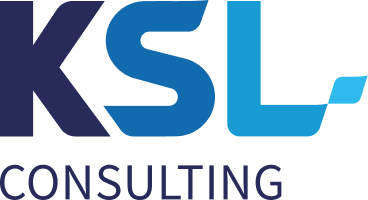Summary
We may not know what tomorrow’s jobs will look like, but we can safely assume that when people are more curious, emotionally intelligent, resilient, driven, and intelligent, they will generally be better equipped to learn what is needed to perform those jobs, and provide whatever human value technology cannot replace. Rather than betting on specialists or forcing people into specific niches, organizations need to focus on expanding people’s talents. What we need is not just re-skilling or up-skilling, but pre-skilling: that is, being able to future-proof talent and reinvent peoples’ careers before we even know what tomorrow’s jobs and in-demand skills will be. This article makes five broad recommendations for preparing your workforce for an uncertain future
Pre-Skilling Your Workforce for an Unknown Future
How can this be done? Although nobody has the exact recipe, not least because there’s no data on the future, we can extrapolate from macro historical trends, as well as draw lessons from recent economic and human capital patterns, to make five broad recommendations:
1) Focus on potential
As the lifespan of current skills, expertise, and performance shrinks, it is advisable to hire and promote people for what they could do, rather than what they have done in the past. This means prioritizing soft skills — such as learning ability, curiosity, resilience, and adaptability — over hard skills — such as programming or data mining — focusing on the foundational ingredients of employability rather than current technical expertise or past employment history, both of which still dominate modern hiring approaches.
Simply put, we may not know what tomorrow’s jobs will look like, but we can safely assume that when people are more curious, emotionally intelligent, resilient, driven, and intelligent, they will generally be better equipped to learn what is needed to perform those jobs and provide whatever human value technology cannot replace. One advantage with potential is that we have reliable and proven methods to measure it, notably psychological assessment tools, which can also be used to develop people’s potential, particularly through normative and data-driven feedback that helps them identify gaps between where they are and where they need to be (see next point).
2) Provide crucial feedback
Even before AI’s arrival, there was already a great deal of confusion and misunderstanding around aligning people’s talents and potential with the best career choices. Things are even more complex now, and most employees (and managers) are rightly wondering what they will do in the future, whether their experience and expertise — and all the time and money they invested in their careers — will still be relevant, and if so, where.
Sharing data-driven feedback (from assessments, internal data, and peer-ratings) and helping people understand how their interests and skills can be a future asset to your organization is key. This means thinking of leaders as coaches or talent agents, where their main job is to proactively nurture people’s talents, as well as harness their full potential. Remember: Most people are feedback-deprived, and a staggering two-thirds of feedback interventions fail to produce desirable results. The key is to tell people what they need to hear even when they don’t want to hear it, and above all, that you tell them something they didn’t know and that can motivate them to get better.
Crucially, it is not enough just to provide people with feedback on their skills gaps; organizations also need to incentivize them to develop the relevant skills while providing the most efficient, enticing, and impactful programs to develop them.
3) Focus on talent expansion
Rather than betting on specialists or forcing people into specific niches, focus on broadening or expanding people’s talents. This means not playing to people’s strengths, but rather, helping them develop new strengths, so they become a more versatile version of themselves.
We all have a natural tendency to adapt the world to our current skills so that we can do “more with less” and optimize for lazy efficiency rather than stretch goals or new skills acquisition. In reality, unless your employees are in the top 1% of any area of expertise (which, by definition, can only apply to a very small selection of individuals), they will be better served becoming a jack of all trades, not least because with every new task or skill you learn, there will be many new underlying skills with adjacencies to other tasks, jobs, and careers.
This will also increase diversity and inclusion. As Harvard’s Joseph Fuller and Christina Langer and Burning Glass Institute’s Matt Sigelman point out: “The shift to skills-based hiring will open opportunities to a large population of potential employees who in recent years have often been excluded from consideration because of degree inflation.” If organizations complain about their inability to find diverse and creative talent, they should stop looking for talent in the same old places and ways.
4) Invest in mid-level managers
As Amy Edmondson and I recently noted, managers hold the key to unlocking human potential at work, especially when the challenge is to revitalize, reenergize, and reimagine talent. Even before the AI age, the role of middle managers was critical and accounted for 30 to 40% of team performance, but the role has increased massively in complexity.
Historically, a manager was someone with proven technical expertise and strong past performance as an individual contributor. Today, they need to understand not just the “classic” managerial tasks (hire the right people, give them the right tasks and direction, use feedback to motivate them, and enable team performance), but also some very complex specific new challenges, such as managing hybrid and virtual teams, creating psychological safety, boosting DEIB (which includes hiring and motivating people who are different from themselves), and helping people manage the human-AI age, including all the uncertainties and stress that evokes.
In short, there has never been a better time to invest in mid-level managers, especially harnessing the critical soft skills that will likely future-proof them by enabling them to keep up with technological advancements and drive the value realization their organizations expect from new innovations.
5) Invest in leadership skills
If you are worried about an AI-fueled future but still think humans will be part of the picture, then you should be worried about pre-skilling your leaders, for they will (still) be tasked with setting and selling the company’s strategy, and driving the evolution of its culture, in tomorrow’s uncertain time. In part, this is still about promoting individuals with the right soft skills (as per Step 1) and developing those skills. It is also about moving on and understanding that today’s top leaders may be a poor fit for the future, not least because their success is based on replicating what has worked in the past, which is often an obstacle to changing or learning new things.
Importantly, investing in leadership means harnessing the skills that enable people to collaborate effectively and become a high-performing team. It is not about promoting individuals to senior positions or glorifying status, let alone about the popularity contest that often underpins “high-potential” nominations — rather, it is about the qualities people must have to inspire, motivate, and bring others along into a future that will surely include AI, but should ideally also be defined as the human-AI age. This is the critical leadership challenge of today. If organizations can upgrade their leadership-selection systems, shifting from replicating past success profiles to selecting and nurturing for future skills, all other challenges will become easier. In particular, this means de-emphasizing things like “culture fit,” past performance, and technical expertise to focus more on learning ability, curiosity, integrity, and people skills. More importantly, if organizations are truly interested in harnessing diversity, they must prioritize inclusive leadership and cognitive diversity, breaking the homogeneity in leadership profiles.
. . .
Technology is always changing, but to ensure that those changes are actually an evolution (i.e., contributing to progress), we must make every possible effort to enable humans to develop and deploy the relevant talents to reap the potential benefits of technology. Although this is by no means a given, we should have faith and confidence in our species’ ability to continue to adapt to its own technological inventions.




